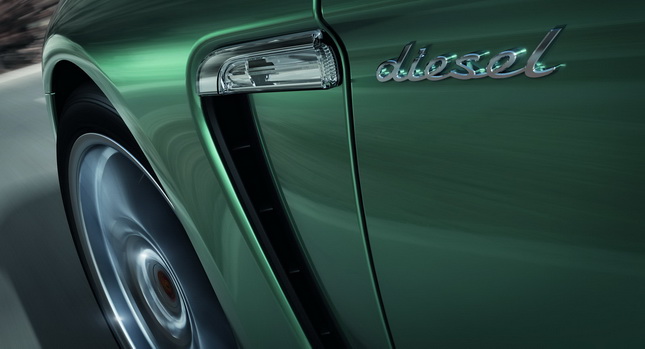Unlike European motorists, the vast majority of U.S. car buyers prefer their vehicles’ engines to consume gasoline and not diesel. Across the pond, diesel-powered models account for half of all vehicle sales, reaching at times as high as 70 percent of the market in countries like Italy and France.
Residents of the Old Continent have been choosing diesel over gasoline models for a very obvious reason: a diesel engine is on average 40 percent more efficient than a gasoline unit.
With the emissions problems that plagued previous generation diesel engines now solved and the added benefit of low-end torque, which is quite useful in real world driving, opting for a diesel is the obvious choice when it comes to everyday models.
 Manufacturers are also investing heavily on diesel technology. Even Porsche – of all makers, offers diesel versions of its Panamera and Cayenne models. BMW recently rolled out M-Performance badged diesel models (albeit with three turbos). But it’s not power they’re after, but the need to comply with fuel consumption and CO2 emission regulations.
Manufacturers are also investing heavily on diesel technology. Even Porsche – of all makers, offers diesel versions of its Panamera and Cayenne models. BMW recently rolled out M-Performance badged diesel models (albeit with three turbos). But it’s not power they’re after, but the need to comply with fuel consumption and CO2 emission regulations.
Some carmakers have already announced that they will bring diesel versions of their models in America. A Cruze with a 160HP 2.0-liter turbodiesel under its hood and a combined fuel consumption of 5.2 lt/100 km (42 mpg US) on the European cycle will hit Chevy’s American showrooms in early 2013 – around the same time as the 2.2-liter Skyactiv-D Mazda CX-5 crossover and the Cayenne 3.0-liter diesel.
Last year, diesel-powered models sales increased by an impressive 27.4 percent in the States. The bad news is that they were mostly German cars (BMW, Mercedes-Benz and VW) and their overall share in the new car market is just 3.0 percent.
For most manufacturers, though, this side of the Atlantic remains strictly a gasoline territory. Mercedes-Benz, for example, introduced two hybrid versions of the E-Class mid-size luxury sedan. They share the same electric motor and battery pack, but under the hood, one of them has a gasoline engine and the other a diesel. Although the diesel hybrid has a fuel consumption of 56.0 mpg (on the EU cycle) and the gasoline version manages 27 mpg (CAFE standards), only the second will be available on this side of the Atlantic.
At a time when the administration is introducing a 54.5 mpg CAFE standard for 2025, one would expect that more carmakers would change their stance of keeping diesels out of the U.S. But it looks unlikely that they will.
“Yes, diesels have a substantial advantage over gasoline engines”, says John German, a senior fellow with the International Council on Clean Transportation think tank. “And it’s puzzling why there are not more of them in use in the United States.”
Mazda North America product development engineer Dave Coleman has a reasonable explanation. “Their benefits are not immediately obvious to U.S. consumers. It requires some arithmetic and a calculator. The pump price of diesel is higher than gasoline – higher even than premium gas.”
But Coleman has an answer for that, too: “The diesel engine costs more do build, so it’s more expensive to buy. So you have to calculate what your savings will be over years of driving.”
Surely, though, Americans can do the math and grasp the concept of getting at least 40 percent more mileage out of a single tank. Yes, diesels cost, on average, US$2,700 more than gasoline versions of the same model.
At the same time, they are buying hybrids at twice the rate. And these cost an average of US$6,300 more than gasoline-engine cars. Therefore, the sticker price argument falls apart.
The real problem is the price they have to pay at the fuel pump. Whereas in Europe diesel is usually a bit cheaper, in the States a gallon of gasoline costs on average US$3.39 compared to US$3.85 for a gallon of diesel.
The difference wouldn’t be that high if the U.S. government didn’t impose a higher federal tax on diesel fuel than on gasoline and the refineries weren’t willing to export refined diesel to Europe where it is in high demand.
Story References: Autonews




